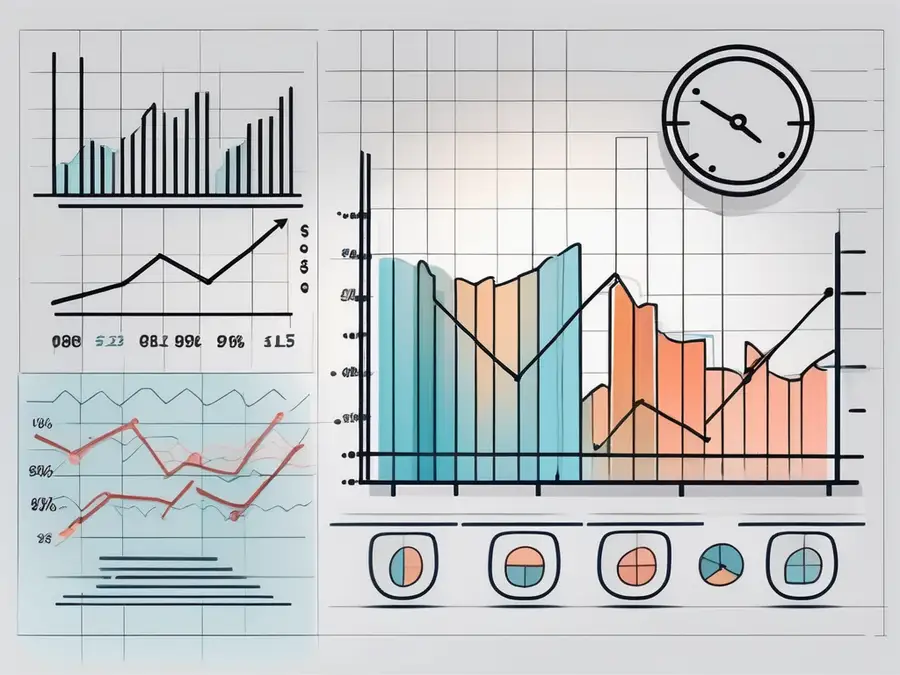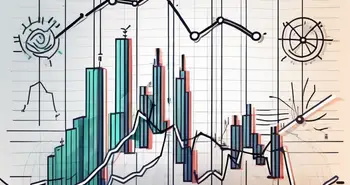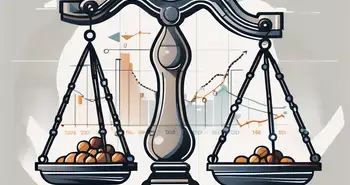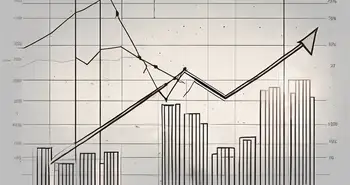Effective Price Analysis Techniques: A Comprehensive Guide

As an expert in the field of price analysis, I understand the importance of accurately evaluating the cost of products and services. Price analysis enables businesses to make informed decisions, negotiate contracts, and ensure fair pricing. In this comprehensive guide, I will take you through the essential techniques and steps involved in conducting an effective price analysis. So let's dive right in!
Understanding the Basics of Price Analysis
Before we delve into the techniques, let's start with the fundamentals of price analysis. Price analysis refers to the process of comparing the prices of goods or services to determine their reasonableness, competitiveness, or fair value. It plays a crucial role in procurement, contract negotiations, budgeting, and overall financial decision-making.
Definition and Importance of Price Analysis
Price analysis involves an in-depth evaluation of various factors such as market trends, supplier quotes, historical data, and cost elements to determine the true value of a product or service. It helps businesses ensure that they are not overpaying or underpaying for what they are purchasing.
Key Elements of Price Analysis
When conducting a price analysis, it's important to consider several key elements:
- Market Demand and Supply: Understanding the dynamics of supply and demand in the market can help determine if the price is reasonable.
- Competitive Landscape: Analyzing the prices charged by competitors provides valuable insights into market rates.
- Cost Breakdown: Examining the various cost components involved in producing or delivering the product/service helps identify any potential price discrepancies.
- Price History: Evaluating past pricing data and trends can provide a benchmark for assessing the current price.
- Quality Comparison: Assessing the quality of different products or services is essential to ensure that price reflects value.
Market Demand and Supply: One of the key elements in price analysis is understanding the dynamics of market demand and supply. By analyzing the current market conditions, businesses can gain insights into the availability of the product or service and how it affects the price. For example, if there is a high demand for a particular product and limited supply, the price is likely to be higher. On the other hand, if there is an oversupply of a product and low demand, the price may be lower. By considering these factors, businesses can make informed decisions about the reasonableness of the price.
Competitive Landscape: Another important element in price analysis is analyzing the prices charged by competitors. By studying the pricing strategies of competitors, businesses can gain a better understanding of the market rates and determine if their prices are competitive. This information can help businesses adjust their pricing strategies to remain competitive in the market. Additionally, it can provide insights into the perceived value of the product or service based on the prices charged by competitors.
Cost Breakdown: Examining the various cost components involved in producing or delivering the product/service is crucial in price analysis. By breaking down the costs, businesses can identify any potential price discrepancies. For example, if the cost of raw materials has increased significantly, it may justify a price increase. On the other hand, if the cost of production has decreased, it may warrant a price reduction. By understanding the cost breakdown, businesses can ensure that the price they are paying aligns with the costs involved in producing or delivering the product/service.
Price History: Evaluating past pricing data and trends is an essential element in price analysis. By looking at the historical prices of a product or service, businesses can establish a benchmark for assessing the current price. This information can help identify any significant price fluctuations and understand the factors that have influenced those changes. By considering the price history, businesses can make more informed decisions about the reasonableness of the current price and anticipate any potential future price changes.
Quality Comparison: Assessing the quality of different products or services is a vital aspect of price analysis. Price alone does not determine the value of a product or service; it must be considered in conjunction with the quality offered. Businesses need to ensure that the price they are paying reflects the value they are receiving. By comparing the quality of different products or services, businesses can make more accurate assessments of the value and determine if the price is fair and reasonable.
Different Types of Price Analysis Techniques
Now that you understand the basics, let's explore three key price analysis techniques:
Comparative Price Analysis
This technique involves comparing prices of similar products or services in the market. By examining the price ranges and evaluating features, specifications, and quality, you can establish a fair price range for the intended purchase.
Cost Analysis
Cost analysis focuses on determining the cost elements associated with the production or delivery of a product or service. This technique helps identify any significant cost variations and enables you to negotiate fair pricing with suppliers.
Break-Even Analysis
Break-even analysis is particularly useful when introducing a new product or service. By calculating the point at which costs are covered and revenue is generated, you can set an appropriate price that ensures profitability.
Steps in Conducting a Price Analysis
Now let's explore the steps involved in conducting a comprehensive price analysis:
Identifying the Product or Service
Before you embark on a price analysis, clearly define the product or service that requires evaluation. This step is crucial because it sets the foundation for accurate analysis.
Gathering Relevant Market Information
Collect data on the current market landscape, competitor pricing, and industry trends related to the product or service in question. Utilize online resources, industry reports, and supplier quotations to gather comprehensive information.
Analyzing the Data
Once you have collected the necessary data, analyze it to identify patterns, market trends, and any variations in pricing. Consider the key elements we discussed earlier, such as market demand and supply, cost breakdowns, and quality comparisons.
Common Mistakes in Price Analysis and How to Avoid Them
Even in a comprehensive guide, it's important to highlight common mistakes that can hamper the effectiveness of price analysis. Avoid falling into these traps:
Overlooking Market Trends
Failing to stay up-to-date with current market trends can lead to inaccurate price assessments. Keep a keen eye on changes in consumer preferences, technology advancements, and economic factors that impact pricing.
Ignoring Quality Differences
Price alone should not be the sole factor driving your decision. Failing to consider the quality differences between products or services can result in suboptimal choices that may lead to higher costs in the long run.
Failing to Consider Total Cost of Ownership
When evaluating prices, it's essential to look beyond the initial cost. Take into account additional expenses associated with maintenance, repairs, and upgrades. A thorough assessment of the total cost of ownership will provide a clearer picture.
As a seasoned professional in price analysis, I've had my fair share of experiences. One particular scenario stands out in my mind. I was working with a client who was close to finalizing a deal with a supplier solely based on the price offered. However, after conducting a comprehensive price analysis, we discovered that the supplier had been compromising on quality to maintain those low prices. Armed with this information, my client was able to negotiate better terms and secure a supplier who offered both competitive rates and superior quality. This experience further reinforced the importance of thorough price analysis.
Frequently Asked Questions (FAQ)
What is price analysis?
Price analysis is the process of evaluating the cost of goods or services to determine their reasonableness, competitiveness, or fair value. It involves comparing prices, analyzing cost elements, and considering market trends to ensure fair pricing.
What are the key elements of price analysis?
The key elements of price analysis include market demand and supply, competitive landscape, cost breakdown, price history, and quality comparison. Considering these elements provides a holistic view of pricing.
What are the common mistakes to avoid in price analysis?
Some common mistakes to avoid include overlooking market trends, ignoring quality differences, and failing to consider the total cost of ownership. Staying informed, assessing product quality, and looking beyond the initial cost are essential.
Now armed with these effective price analysis techniques, you can confidently navigate the complexities of procurement, negotiations, and financial decision-making. By understanding the basics, exploring different techniques, and following the steps outlined, you will be well-equipped to make informed decisions about pricing. Remember, thorough analysis leads to fair prices and ultimately enhances the success of your business.
Ready to put your newfound price analysis skills into action? Look no further than Morpher, the revolutionary trading platform that's changing the game with blockchain technology. With Morpher, you can trade a variety of asset classes with zero fees, infinite liquidity, and the safety of a non-custodial wallet. Whether you're interested in fractional investing, short selling, or leveraging up to 10x, Morpher offers a unique trading experience tailored to your needs. Sign Up and Get Your Free Sign Up Bonus today to start trading like never before!

Disclaimer: All investments involve risk, and the past performance of a security, industry, sector, market, financial product, trading strategy, or individual’s trading does not guarantee future results or returns. Investors are fully responsible for any investment decisions they make. Such decisions should be based solely on an evaluation of their financial circumstances, investment objectives, risk tolerance, and liquidity needs. This post does not constitute investment advice.

Painless trading for everyone
Hundreds of markets all in one place - Apple, Bitcoin, Gold, Watches, NFTs, Sneakers and so much more.

Painless trading for everyone
Hundreds of markets all in one place - Apple, Bitcoin, Gold, Watches, NFTs, Sneakers and so much more.









